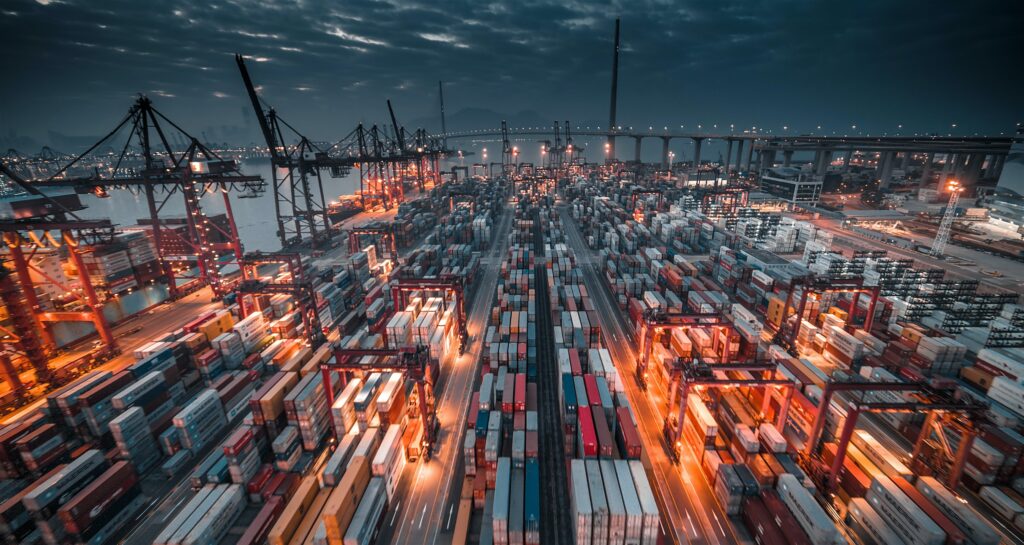A little history
Digital transformation is often thought about in soft terms. We speak of using data to provide supply chain insight, or of implementing machine learning to accelerate supply chain processes. One area that has been undergoing digital transformation for many years now is manufacturing and at the heart of that is the advent of 3D printing.
Already over 35 years old, 3D printing is moving away from its origins as a tool for designers and changing supply chains now. Today, 3D printing is a USD 10 billion market and it has been on a long term annual growth trend of some 20%. It has already transformed entire industries – the global hearing aid industry went from traditional to 3D printed manufacture in under 3 years, and today 99% of inner ear shells are 3D printed. The pace, depth and breadth of its application in industrial situations are accelerating, driven by the wider impact of digital transformation.
A significant potential
Unlike traditional manufacturing – which involves techniques which start with an amount of raw material and then remove some of that by drilling, milling, sanding and so on – 3D printing makes things by building them layer-by-layer. That is why it is also known as additive manufacture. It uses digital designs to make items in 3D printing machines that use one of a range of techniques, from those which apply layers of molten plastic, those which melt high grade metal powders with lasers, to machines which create items by solidifying layers in a vat of liquid polymers. This means that 3D printers can make different designs of an item just as easily as making one, with no need for retooling.
The characteristics of 3D printing make it particularly suitable for emerging supply chain models:
- It can produce several “lots of one”, that is, sets of items which each have a unique design
- It can make items with complex designs that simply cannot be made using traditional manufacturing techniques, allowing designs to be optimised to, for example, reduce weight while increasing strength
- Items which previously needed to be assembled, thereby lengthening the production cycle time and increasing the complexity of the supply chain, can be fabricated in fewer parts or even as a single item
- When considered end-to-end, 3D printing is much faster than traditional manufacturing, as it is quicker to set to work and retool
It can make items in an ever-increasing range of materials, from plastic and metallic to ceramic and organic.
Learn More: MRO Revolution
A complex area to manage in many operations is that of maintenance. MRO items (maintenance, repair and operation) are diverse, with erratic demand, a challenge for any specialist in inventory management. With 3D printing producing items on demand, inventory can be minimised – even zeroed.
The German railway company has used 3D printing to make over 2,200 spare parts for its trains, reducing the lead time for their replacement from several months to days. Even accounting for the higher cost per item from the more expensive raw materials, the parts have a lower overall cost when economies in design and ramping up production are included.
Challenges to overcome
However, there are a number of factors that have held it back from wider use. For instance, most parts need some level of post-production. As the focus of the technology has been on making things for prototyping, there hasn’t been a need for items to have a high quality finish. Moreover, 3D printers are expensive to own and the raw materials they use are costlier than their equivalents used in traditional manufacture. However, competitive pressures are driving materials suppliers’ prices down. 3D printing will never be able to mass produce items in the same way that, say, plastic injection moulding can but 3D printing is increasingly being used to make the moulds themselves, as it offers the makers of those with faster cycle times and lower costs. Also, while the range of materials is widening, it is still not as diverse as it needs to be. The ability to make items in different colours at the same time has only been possible in the last 3 years.
These drawbacks are recognised by the 3D printing industry and new approaches that either resolve or work around the problems are being used. For example, the company Additive Industries’ MetalFab1 is an integrated 3D printing machine which incorporates post-production, using automation to move parts through the production process in a single set of cabinets. 3D printer providers, like Stratasys and EOS, offer customers leasing contracts to reduce the cost of ownership, maintenance and repair of 3D printers, while others like Fast Radius give customers access to 3D printing hubs, effectively outsourcing 3D printing manufacture.
When looked at in combination, 3D printing has applications that many companies should consider, if not for themselves then at least as a competitive risk from rival companies. For example, the faster cycle times and the ability to make small lots of differently designed items accelerates the market research cycle time – the information and feedback that traditionally would take months to collect can be obtained in days or a few weeks by 3D printing designs.
3D printing is more and more being used in the medical sectors, from bespoke dental implants to making pre-operative models to orientate and train surgeons. These have direct benefits for both the healthcare provider and the patient: a recent study found that using 3D printed models of a patient reduces the time of surgical procedures, which reduces the time and therefore cost of operating rooms. At the same time, those procedures resulted in patients who didn’t need as much post-operative care in hospital with a reduction in their risk of infection.
Even before items are made, 3D printing is helping to change how they are made. The complexity and high quality needs of tooling, jigs and fixtures in traditional manufacture, from casts to drill bits, makes them excellent candidates for 3D printing, reducing the time it take to make them and their cost per item.
Learn More: Delivering economies through 3D printing
End use parts are also already being fabricated using 3D printing. The fuel nozzles that feed the latest jet engines made by global industrial company GE are fabricated by 3D printers, which has allowed the company to reduce the production cost and time of each nozzle. Moreover, the freedom to design it without the constraints of traditional manufacture has increased the nozzles’ 15% increase in fuel efficiency.
What next for 3D printing?
The flexibilities that 3D printing presents have a disrupting effect on manufacturing, allowing established companies to transform how they operate and meet their customers’ needs, and enabling new entrants to quickly establish themselves. The availability of 3D printing facilities and machines means that introducing this form of production in emerging economies, such as Brazil, Russia and India, is much faster, easier and cheaper than employing traditional manufacturing, with the added advantages in form and cycle times that 3D printing offers.
3D printing is happening now and companies are well advised to consider how it could impact their own operations. That assessment also needs to consider the effect of their competitors, suppliers and customers employing 3D printing.
About the Authors
Len Pannett is our Managing Partner based in London, UK, and has over 25 years’ experience of helping engineering, manufacture and technology organisations to implement operational transformations. The President of the UK Roundtable of the Council of Supply Chain Management Professionals (CSCMP) and a Fellow of the Institution of Engineering and Technology (IET), he is an award-winning speaker and author on the impact of 3D printing on supply chains.
Juliano is a Partner at Visagio, with a focus on logistics and supply chain management, particularly through the use of strong analytics. He has over 10 years’ experience of leading projects in Brazil, Chile, Peru and the United States. Juliano holds a bachelor degree in Industrial Engineering from the Federal University of Rio de Janeiro, Brazil, and a Masters in Operational Research from COPPE-UFRJ, Brazil. He also completed the MBA Exchange Program at Fisher College of Business at Ohio State University, USA.


